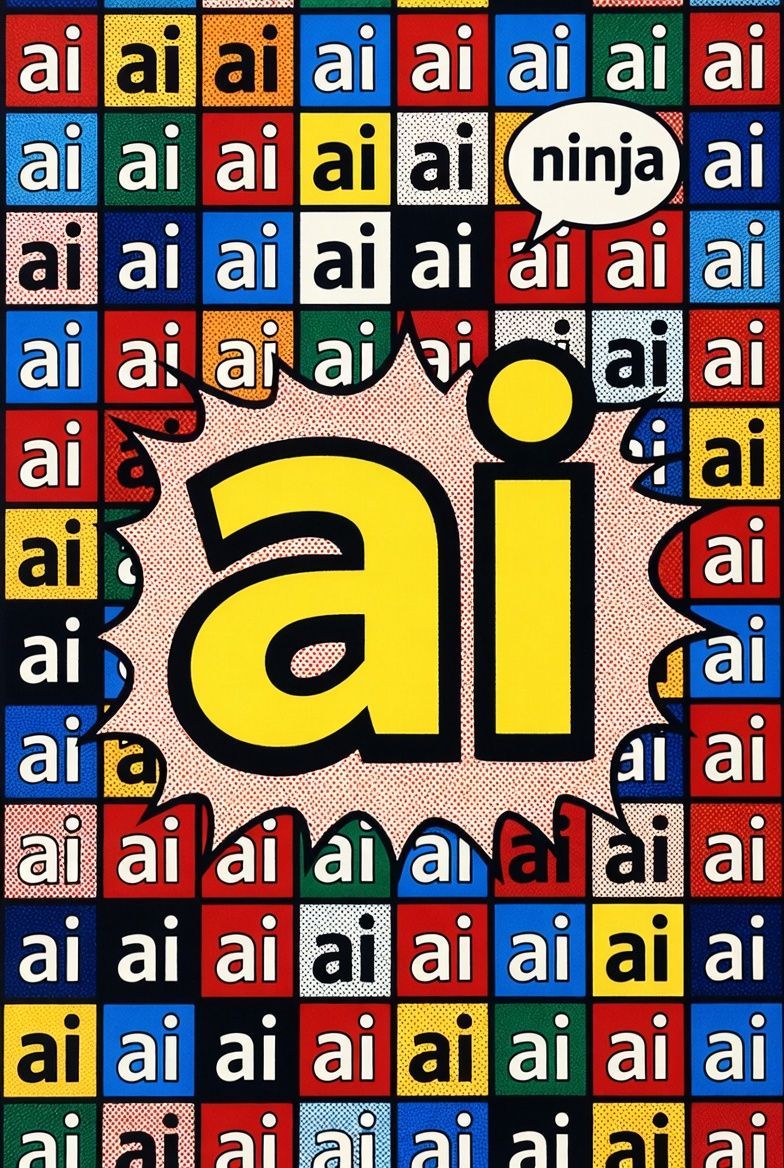Vibe-Coding & AI-Assisted Development: What It Means for Agencies

TL;DR
Vibe-coding (AI-assisted development) is shifting how we build software—and as an agency owner you either ride this wave or risk falling behind. This post breaks down what vibe-coding is, how it fits into agency workflows (especially SEO/web projects for NinjaAI), what the benefits and hidden risks are, and how to systematically adopt it with discipline. Table of Contents follows.
Table of Contents
Introduction: Why vibe-coding matters now
Defining “vibe-coding” and tracing its origin
How AI-coding tools are reshaping developer workflows
Key benefits for an AI/SEO agency
Major risks and how to manage them
Criteria for selecting AI-coding tools in agency context
Workflow blueprint: Integrating vibe-coding into NinjaAI systems
Real-world agency use-case: From idea to internal tool
Skills & culture shift needed: Your team, clients, process
Future outlook: Where vibe-coding leads in 2027-2030
Conclusion
Frequently Asked Questions (20 items)
1. Introduction: Why vibe-coding matters now
For an agency like yours (NinjaAI.com), speed, creativity, and differentiation matter. Traditional development cycles are too slow and expensive. AI-assisted coding—what’s often called “vibe-coding”—offers a radical shortcut: imagine going from client idea → functioning tool or prototype within days rather than weeks. But it also demands new discipline. It isn’t just about “asking the AI to write it” and forgetting about it. The real advantage comes when you embed governance, review, and strategic oversight into the workflow.
2. Defining “vibe-coding” and tracing its origin
The term “vibe-coding” is used to describe a coding paradigm where you describe in natural language what you want and AI does much of the heavy lifting. According to Andrej Karpathy, it’s about “fully giving in to the vibes, embrace exponentials, and forget that the code even exists.”
DEV Community
+2
Medium
+2
In simpler terms:
Traditional coding = you manage syntax, infrastructure, libraries, logic step by step.
Vibe-coding = you specify intent (“Build me a lead-capture tool that integrates with Google Sheets, sends an email, logs results”) → AI generates scaffolding, you review & refine.
Multiple resources echo this: for instance, IBM describes it as “where users express their intention using plain speech and the AI transforms that thinking into executable code.”
IBM
It’s not yet utterly replacing devs—but it is shifting the locus of work toward higher-level thinking and away from boilerplate.
3. How AI-coding tools are reshaping developer workflows
Several studies and blogs document the change:
Developers using AI tools report they spend more time on system design, collaboration, and learning new skills—not just writing lines of code.
GitHub Blog
+2
blog.miguelgrinberg.com
+2
Lists of “best AI coding tools” proliferate (e.g., tool comparisons, pros/cons).
n8n Blog
+2
Qodo
+2
What this means for workflow:
Ideation → prompt → prototype becomes quicker.
Human review / test / governance must become mandatory, because the AI output is not guarantee of quality.
Non-dev stakeholders (SEO specialist, marketer, business owner) can now meaningfully interface with tool-build process: less need for “could you code that for me” and more “tell the system what you want, I’ll refine”.
For agencies: internal tools, client projects, experiments can launch faster; your competitive advantage shifts to how well you integrate, refine, brand, deploy—not just whether you built something.
4. Key benefits for an AI/SEO agency
Here’s why you should care (and act):
Speed & cost efficiency: Build internal tools, dashboards, proofs-of-concept faster using vibe-coding, reducing dev hours.
Differentiation: Offer clients not just “SEO content” but “SEO + custom AI tooling” (e.g., internal audit automation) built faster because you adopt vibe-coding.
Scalability: Once you standardize prompts and workflows (which fits your process-oriented mindset), you can replicate across clients.
Internal innovation: Use the extra capacity freed by AI-coding tools to build proprietary assets (your “AI Visibility Stack”, “Jason Wade Audit tool”) rather than always custom code.
Client value: You can show clients that you’re using advanced methodologies, which elevates your brand (NinjaAI becomes more than “SEO agency” → “AI-enabled growth partner”).
5. Major risks and how to manage them
Speed without control = problems. Key risks:
Technical debt: AI-generated code may be hard to read, maintain, or extend if not reviewed.
Security vulnerabilities: AI may produce code that is functionally correct but insecure.
Ownership/licensing issues: Depending on tool and model you use, output may have unclear IP.
Skill atrophy: If you over-outsource to AI without oversight, your team may lose critical problem-solving skills.
Over-hype & client mis-expectation: Clients might think you can “build anything in hours” (which sometimes you can), but production systems still need architectural thinking and QA.
For each risk, you can build mitigation:
Mandatory code review checklist, including readability, naming conventions, test coverage.
Security scan (automated) for AI-generated code.
Clear workflow: prompt → AI output → human refine → test → deploy.
Internal training: Ensure team understands fundamentals (not just “prompt this AI”).
Set proper client expectations: Prototypes vs production readiness.
6. Criteria for selecting AI-coding tools in agency context
Since you’re process-driven, here are criteria aligned with what you care about:
IDE / stack integration: Works with your dev environment (VS Code, JetBrains).
Context-length / codebase awareness: How well the tool understands your project.
Output quality: Real-world tests show fewer bugs, better clarity.
Security/enterprise features: If you’ll build for clients with high standards.
Prompt & agent flexibility: Can you control the workflow (prompt → generate → refine)?
Pricing / scaling model: For agency builds you’ll scale up; cost matters.
Support / roadmap: Early-stage tools may change or die.
Cross-refer to reviews & comparisons (see blogs listed earlier). For example the Qodo blog analyzed “15 Best AI Coding Assistant Tools in 2025” with criteria like syntax/complexity, documentation support, security.
Qodo
7. Workflow blueprint: Integrating vibe-coding into NinjaAI systems
Here’s a step-by-step workflow you can adopt (and turn into a template for clients/internally).
Discovery & prompt design
Define the tool/feature you need (e.g., “SEO audit tool that scans clients’ site, extracts keywords, outputs slide deck”).
Write a clear natural-language prompt that describes input → process → output.
AI generation phase
Use your selected AI-coding tool (IDE plugin or online agent) to generate initial code scaffold (front-end, back-end, integration).
Human review & refine
A developer reviews code: naming, readability, architecture, dependencies.
Tests are written/auto-generated. Security scan runs.
Internally brand & document
Add your agency’s branding (code style, comments, README).
Document how module works so client or future you can maintain.
Deploy & wrap into productised service
Deploy to staging/production.
Package the tool as a repeatable module you can reuse across clients.
Feedback loop & iteration
Collect client usage data, refine prompt + code, iterate.
Capture lessons learned as internal prompts/templates (your proprietary asset).
Governance & audit
Periodically review modules built via AI for tech-debt, security, updating.
Maintain a “AI-Assisted Code” registry (which features were built via AI, which by hand) to track risk.
This blueprint integrates nicely with your “scalable systems” mindset for NinjaAI: build repeatable modules, intellectual property, internal documentation, process templates.
8. Real-world agency use-case: From idea to internal tool
Let’s say NinjaAI wants to roll out a “Local AI Visibility Dashboard” for SMB clients: a tool that pulls in Google Search Console/API, runs LLM-driven analysis, and outputs actionable insights.
You write the prompt: “Build a Node.js server that connects to Search Console, fetches last 90 days of data for a site, uses an LLM to summarise top 5 issues, generate slide deck in PowerPoint format, and send summary email to client.”
Generate scaffold via AI tool (front-end UI, back-end API, scheduling job).
Review & refine — especially modularise for reuse (so you can sell this as “AI Visibility Dashboard Template”).
Deploy internally, connect branding, run a pilot with 2 clients.
After pilot success, package the module for clients, document it, integrate into your content funnel (“We built our own internal AI tool so we know exactly what metrics matter”).
This becomes a differentiator: not just content + SEO service, but your own tech stack built via vibe-coding.
9. Skills & culture shift needed: Your team, clients, process
Your agency culture needs to shift to fully leverage vibe-coding. Consider:
Team training: Every dev, analyst or tool-builder must understand prompt engineering, how to refine AI output, how to verify.
Cross-role collaboration: SEO specialists, content folks, devs—should coordinate earlier (so the prompt includes SEO goals, content goals).
Process documentation: Build internal playbooks (“vibe-coding checklist”, “AI-code review template”, “prompt library for agency modules”).
Client education: Help clients understand that you’re building faster not cutting corners; set expectations around review, deployment.
Ownership mindset: Even if AI writes code, your agency owns it; you need to ensure maintainability, security, upgrade path.
You’re building not just services but a capability: your “AI-coding factory” as part of NinjaAI’s scalable system.
10. Future outlook: Where vibe-coding leads in 2027-2030
Looking ahead:
Agentic systems (AI tools that don’t just generate code but manage workflows, refactor, test, deploy) will mature.
Requirements shift: It won’t be “can you code?” but “can you direct and audit AI-built systems?”
Non-technical operators (marketer, SME) will increasingly be able to build prototypes; agencies will differentiate by mastery of tooling + architecture + productisation.
The value moves upstream: less about writing code, more about designing features, user experience, business logic, integration, differentiation.
For you, as NinjaAI scales: owning your prompt libraries, internal modules, repeatable workflows will drive margin and defensibility.
11. Conclusion
Vibe-coding isn’t hype—it’s the next layer of dev productivity and agency innovation. But it only wins when embedded with discipline: review, governance, repeatable systems. For NinjaAI.com, this means building your tech stack, internal modules, and client services around AI-assisted tools—not just content. If you do it right, you’ll move faster, deliver more value, and differentiate strongly. If you skip the governance, you’ll risk tech-debt, buggy deliverables, client dissatisfaction. Choose speed and quality. That’s your edge.
12. Frequently Asked Questions (20 items)
What exactly is vibe-coding?
Who coined the term vibe-coding?
How is vibe-coding different from traditional coding?
Do you still need developers if you’re doing vibe-coding?
What kinds of tools support vibe-coding?
How do you choose an AI-coding tool for an agency context?
What are the biggest risks of vibe-coding?
How can an agency mitigate those risks?
Does vibe-coding reduce cost or just speed?
Can non-developers use vibe-coding tools?
How do you integrate vibe-coding into an agency workflow?
What skills do team members need for vibe-coding?
How do you build internal assets using vibe-coding?
How does an agency maintain code quality when using AI tools?
What changes in client expectations when you adopt vibe-coding?
Can vibe-coding scale across multiple clients?
What’s the future of vibe-coding in the next 2-5 years?
Are there ethical or security concerns with vibe-coding?
How do you build a repeatable system around vibe-coding?
Should every agency adopt vibe-coding now or wait?















